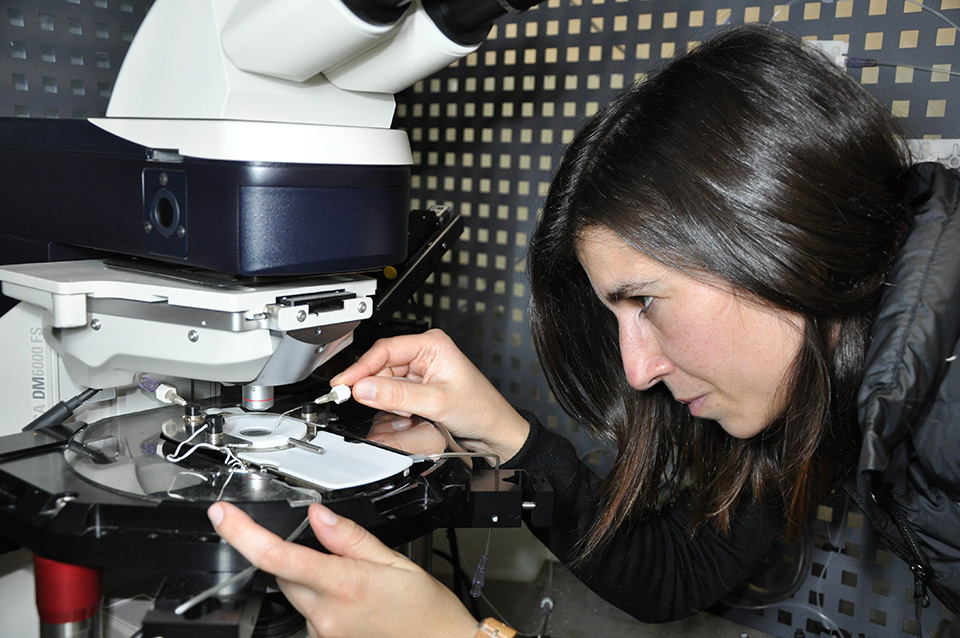
Patricia Monteiro (Fellow 2016–21)
Technology in the brain
Worldwide, one in four people will suffer a mental illness in the course of their lives. While almost every part of the human body can be replaced today, the brain remains largely a black box. That is why Patricia Monteiro chose neuroscience as her field of research.
“Each of the neurons in our brain is actually a small electrical device,” says Patricia. “These billions of neurons are constantly processing signals from the outside world along with internal inputs and outputs. Everything that makes up our personality is stored there. From a reductionist perspective, we are nothing more than electrical impulses in our brains.”
Patricia researches the effects of chronic stress on the brain. Stress is the second most common work-related health problem and is responsible for 50-60 percent of all sick days. During her work on chronic stress disorders and autism, Patricia encountered an obstacle because she lacked the technology necessary to study molecular mechanisms underlying brain disorders. Thus, the plan was born to use yet-to-be-developed technologies to establish new neural interfaces to measure brain activity.
For mental health problems to be addressed, the electrical pattern in the brain’s purely biological system would have to be controlled somehow, for example, by sending an artificial message to the brain. At the time Patricia was applying for the Branco Weiss Fellowship, a type of solar panel called an opsin had just been discovered in an algae. When light of a certain wavelength falls on the solar panel, the opsins allow certain particles to penetrate the algae, thereby charging them with energy – just like solar panels. By implanting the panels in the brain (of mice) via gene therapy, neurons are created that respond to light. Neuron groups can thus be reactivated with light. Previously, researchers had sometimes applied electricity directly to the cells, but this quickly caused damage if the voltage was too high. The solar cells also have the advantage that they can be used for very specific neurons and even for individual brain cells.
The recipe for success in this case was to transfer an existing technology to an application in neuroscience. This methodological feat was at the heart of Patricia’s Branco Weiss Fellowship project. In a sense, she has extended the neuroscience approach to the field of engineering, developing new neural interfaces for measuring brain activity.
Now Patricia is collaborating with physicists and astrobiologists, focusing on the only two-dimensional material, graphene. Being the world’s thinnest material, graphene is ideal as a conductive element to connect materials. Patricia is using graphene to detect molecules found in very low concentrations in the brain. Neural implants with graphene make it possible to detect molecules that would otherwise be very difficult to spot in the human brain. With graphene, the detection limit is in the attomolar range.
The Branco Weiss Fellowship also provided Patricia with an opportunity to make a rather unusual geographic move – she went from MIT to the University of Minho in Braga, Portugal. At the small university, all those in charge were keen to ensure that she had optimal working conditions. She was given a large lab space, access to students, and a fixed salary, so she could use the Fellowship for two graduate students and the necessary equipment. Sometimes a researcher can have greater resources in a small ecosystem than at an elite institute.
Patricia Monteiro is Assistant Professor and Research Group Leader in the Department of Neuroscience at University of Minho in Braga, Portugal.
